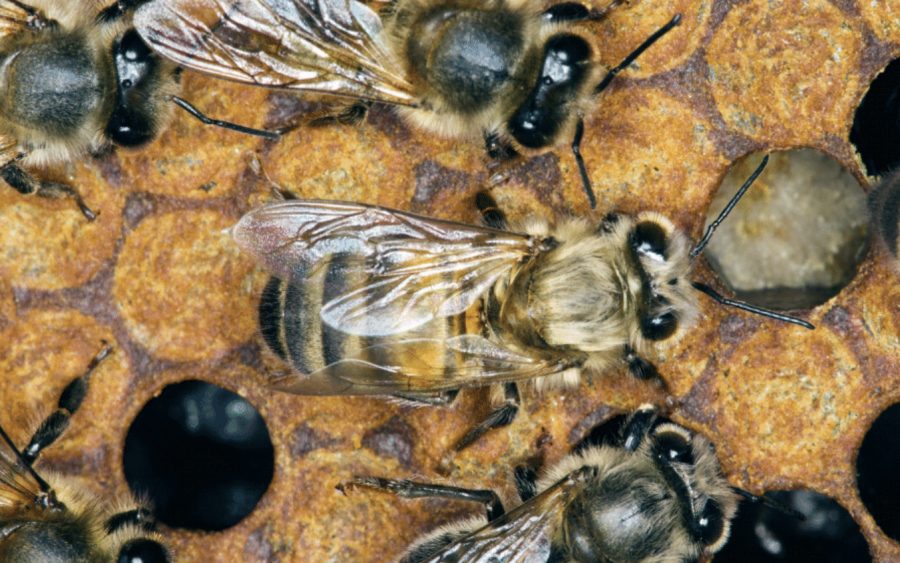Claire Waring looks at what is happening in the colony as the beekeeping season gets into full swing.
Wherever you are inthe country, spring marks the beginning of the active beekeeping season. As the weather, hopefully, improves and the flowers start to bloom, the bees should be ready to take full advantage. The eggs that the queen laid at the beginning of March will now have hatched and there will be increasing numbers of young workers in the hive. Among the first tasks they will undertake are cleaning out the cells, ready for the queen to lay eggs in them, and feeding the larvae that hatch from those eggs. This has a knock-on effect on other members of the colony which can progressively move onto other tasks within the hive. Ultimately, this means more bees can join the foraging force. Assuming conditions are suitable, increasing amounts of nectar will be collected, brought back to the hive and converted into honey.
MAKING COMB
Bees store honey in the hexagonal cells that make up the comb. The comb is constructed from beeswax which is secreted from four pairs of glands under the abdomen. The small flakes produced are manoeuvred to the mandibles, using the legs, and then they are chewed to make them malleable and used to form the comb.
WHAT CAUSES SWARMING?
If there are more foragers collecting more nectar which is turned into honey, what are the consequences for the colony? Eventually, it will run out of storage space, especially as the brood nest is also expanding. Congestion is known to be one of the factors which can trigger the impulse to swarm. Eggs are laid in queen cups, turning them into queen cells and new queens develop in these. Swarming is effectively colony reproduction with the old queen leaving the hive with about half the bees and setting up a new nest in another cavity. This may be an empty ‘bait ’hive set out by the beekeeper or any other suitable space such as a hollow tree, chimney or cavity wall. Back in the colony, one of the new virgin queens will replace the old queen.
This article extract was taken from the Spring 2024 edition of The Country Smallholder. To read the article in full, you can buy the issue here.
To receive regular copies of The Country Smallholder magazine featuring more articles like this, subscribe here.
For FREE updates from the world of smallholding, sign up for The Country Smallholder newsletter here.








